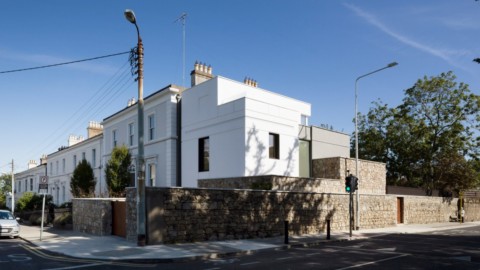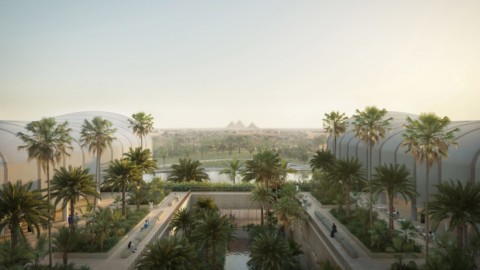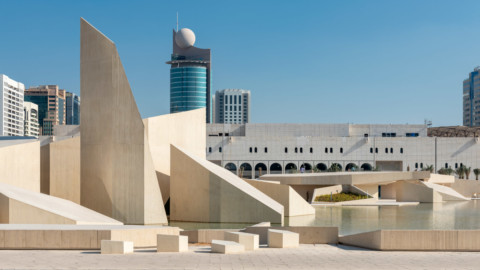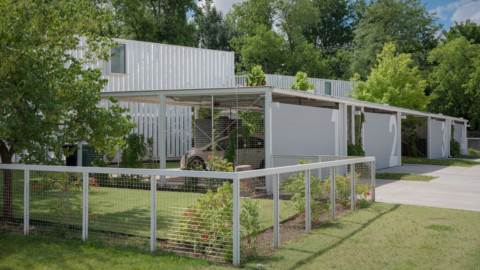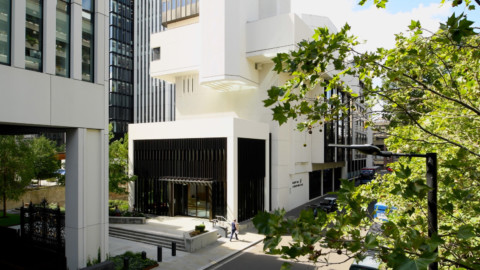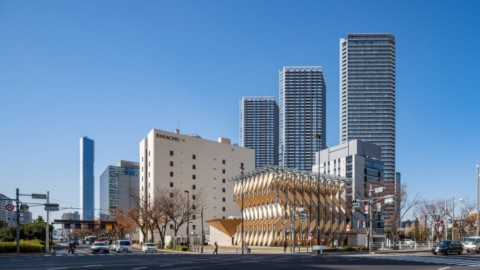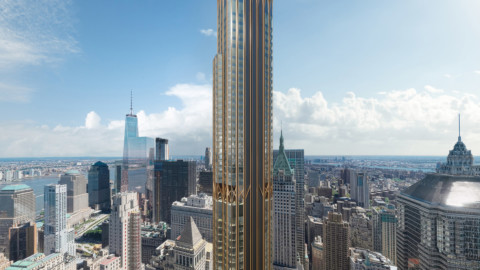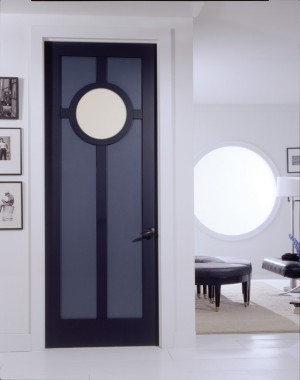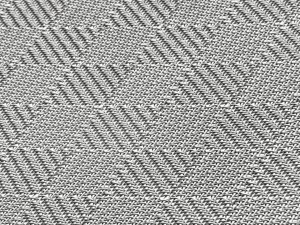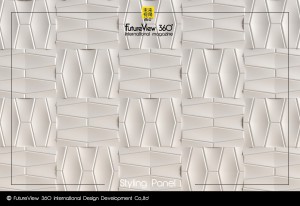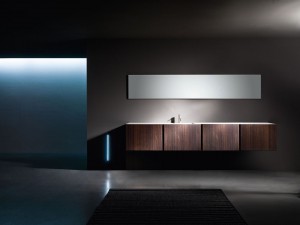“Queer-oglyphs” and a “genderf*ck” colour palette feature in an installation designed by Adam Nathaniel Furman and Australian practice Sibling Architecture as part of the National Gallery of Victoria’s NGV Triennial.
Called Boudoir Babylon, the project celebrates queer aesthetics through a series of painted plywood volumes in NGV’s Gallery Kitchen, which create different spaces for gathering and socialising.
Although the design incorporates stereotypically gendered colours such as baby blue and pink, these are recontextualised and subverted to challenge traditional notions of what is male or female. This is known in the LGBTQ+ community as a “genderf*ck”.
由亞當·納撒尼爾·弗曼(Adam Nathaniel Furman)和澳大利亞實踐兄弟姐妹建築(Sibling Architecture)設計的裝置中的“ Quueer-oglyphs”和“ genderf * ck”調色板功能是維多利亞國家NGV三年展的一部分。
這個名為Boudoir Babylon的項目通過NGV的Gallery Kitchen中的一系列彩繪膠合板體積來讚美酷兒美學,創造了不同的聚會和社交空間。
儘管該設計結合了定型的性別色彩,例如淡藍色和粉紅色,但這些色彩已重新定義並顛覆了傳統男性或女性的觀念。 這在LGBTQ +社區中稱為“ genderf * ck”。

“I see colour as a political, social, active agent within architecture and design, rather than something that’s superficial and to be disregarded,” Furman told Dezeen.
“Here it’s specifically taking colours, which are referencing different gender stereotypes and the idea of the gender reveal. But it’s very much a genderf*ck so they’re all blended together. They’re obviously referential but they don’t have a proper hierarchy and they’re not separated.”
Furman告訴Dezeen:“我將色彩視為建築和設計中的政治,社會,積極角色,而不是膚淺的,不容忽視的事物。”
“這裡是專門上色的,它們分別代表不同的性別刻板印象和性別揭示的思想。但這很大程度上是一種性別特徵,因此它們被融合在一起。它們顯然是具有參考意義的,但是它們沒有適當的色彩。 等級,並且它們不是分開的。”

An installation of geometric forms piled high on top of a circular podium, like decorations on a many-tiered wedding cake, strategically divides the space to create areas for togetherness and solitude, for watching and being watched.
In this way, it pays homage to three distinct spatial typologies – boudoirs, salons and clubs – which toe the line between public and private and have historically acted as safe spaces for marginalised groups in society.
“These are places where, from the 18th century onwards, women, queer people and people of different political or religious beliefs were able to meet and share their identity with others but also where they could express their identity through the design of a space,” said Furman.
“It’s a natural human habit. The first thing that humans in all societies do is they start to express their values and identities through body painting, jewellery, wall paintings, textiles – it’s what sets us apart from other animals in nature.
“That urge has not always been possible to fulfil for minority groups in the West, except for in these semi-private spaces like the salon, the boudoir and later the nightclub,” he continued.
在圓形講台上高高堆疊的幾何形狀的裝置,就像多層婚禮蛋糕上的裝飾一樣,從戰略上劃分了空間,以創建用於聚在一起和獨處,供觀看和觀看的區域。
通過這種方式,它向三種獨特的空間類型致敬:閨房,沙龍和俱樂部,它們在公共和私人之間建立了界限,並在歷史上一直充當社會邊緣群體的安全空間。
“在這些地方,從18世紀開始,婦女,酷兒和具有不同政治或宗教信仰的人能夠見面並與他人分享自己的身份,而且還可以通過空間設計來表達自己的身份。”弗曼說。
“這是一種自然的人類習慣。在所有社會中,人類要做的第一件事就是他們開始通過人體彩繪,珠寶,壁畫,紡織品表達自己的價值觀和身份,這使我們與自然界的其他動物區分開來。
他繼續說:“除了在沙龍,閨房和後來的夜總會這樣的半私人空間之外,西方的少數民族並不總是能夠實現這種渴望。”

Working together entirely via Zoom, Furman and Sibling Architecture incorporated references to each of these spaces within their final design.
Painted screens with playful cutouts – envisioned before the time of social distancing – separate people into small, individual boudoirs while big, round tables around the central feature offer larger groups a space to converge and converse as they would in a salon.
The central carousel, meanwhile, is reminiscent of the raised catwalks and DJ booths often found in nightclubs.
通過Zoom,Furman和Sibling Architecture完全協同工作,在最終設計中結合了對每個空間的引用。
彩繪的屏幕上帶有俏皮的鏤空(在社交疏遠之前就可以想像到),將人們分成小的個人閨房,而圍繞中央特色的大而圓桌則為較大的人群提供了一個聚集和交流的空間,就像在沙龍中那樣。
同時,中央旋轉木馬讓人想起夜總會經常出現的高架走秀和DJ攤位。

“As much we were playing with typologies, we were also thinking about different types of people and the ways they interact,” said Furman.
“So there are spaces for the introvert or the voyeur, who can kind of hide and be in a small, enclosed space with soft edges and still peek out. But then you can also be spectacularly extroverted and expressive like you are on the podium in a club.”
弗曼說:“在研究類型學的同時,我們也在思考不同類型的人及其互動方式。”
“因此,有一些內向的人或偷窺者可以躲藏起來,並處於一個狹窄,封閉的空間中,邊緣柔軟而又會向外窺視。但然後,您也可以像在講台上一樣,表現出外向的表現力和表現力。 一個俱樂部。”

The tiers of this podium are fringed in what Furman and Sibling Architecture have playfully dubbed “queer-oglyphs” – symbols that playfully nod to different body parts and gender markers.
“They’re not at all obvious, they just look kind of cute,” said Furman. “So it’s this idea of being ambiguous, in-between and non-binary.”
The queer-oglyphs will also be printed on a series of merchandise, from hats to bum bags and T-shirts, that will be sold at NGV.
登上領獎台的各個層次都圍繞著Furman和Sibling Architecture嬉戲地戲稱的“奇怪的象形文字”-這些象徵性地向不同的身體部位和性別標記點頭的符號。
弗曼說:“它們一點都不明顯,它們看起來很可愛。” “所以這就是模棱兩可,介於中間和非二進制的想法。”
這些奇怪的字形還將印在一系列商品上,從帽子到腰包和T卹,這些商品將在NGV出售。

Furman describes the installation as “super-camp”, which is to say “not monetised, not about what other people think about you, not indicating how clever you are”.
“It’s actually just about being you and kind of over the top but not saying sorry in any way,” he continued.
“I just hope that it’s just going to make people happy. Even if they hate it – I’m sure there’s a lot of very sophisticated designers who will hate it – it might just make them giggle anyway.”
弗曼(Furman)將安裝描述為“超級營地”,也就是說“沒有獲利,沒有別人對你的看法,沒有表明你有多聰明”。
他繼續說:“實際上,這實際上只是成為你自己,並且有點過分,但絕不表示遺憾。”
“我只是希望它能使人們感到高興。即使他們討厭它-我敢肯定會有很多非常老練的設計師會討厭它-但這可能只會使他們傻笑。”

Boudoir Babylon is one of 30 new works that were commissioned especially for the NGV Triennial.
Also among them is a giant, mutant octopus made from hand-felted cigarette butts that was created by South African designer Porky Hefer as part of his Plastocene project about ocean pollution.
Photography is by Sean Fennessy.
Boudoir Babylon is on view at NGV International in Melbourne from 19 December 2020 to 18 April 2021. See Dezeen Events Guide for an up-to-date list of architecture and design events taking place around the world.
閨房巴比倫是專門為NGV三年展委託創作的30部新作品之一。
其中還包括一個巨大的,突變的章魚,它是由手工製作的煙頭製成的,這是南非設計師Porky Hefer在他的Plastocene項目中進行的海洋污染項目的一部分。
攝影是Sean Fennessy。
閨房巴比倫將於2020年12月19日至2021年4月18日在墨爾本的NGV International上展出。有關全球範圍內正在發生的建築和設計活動的最新列表,請參閱Dezeen活動指南。



